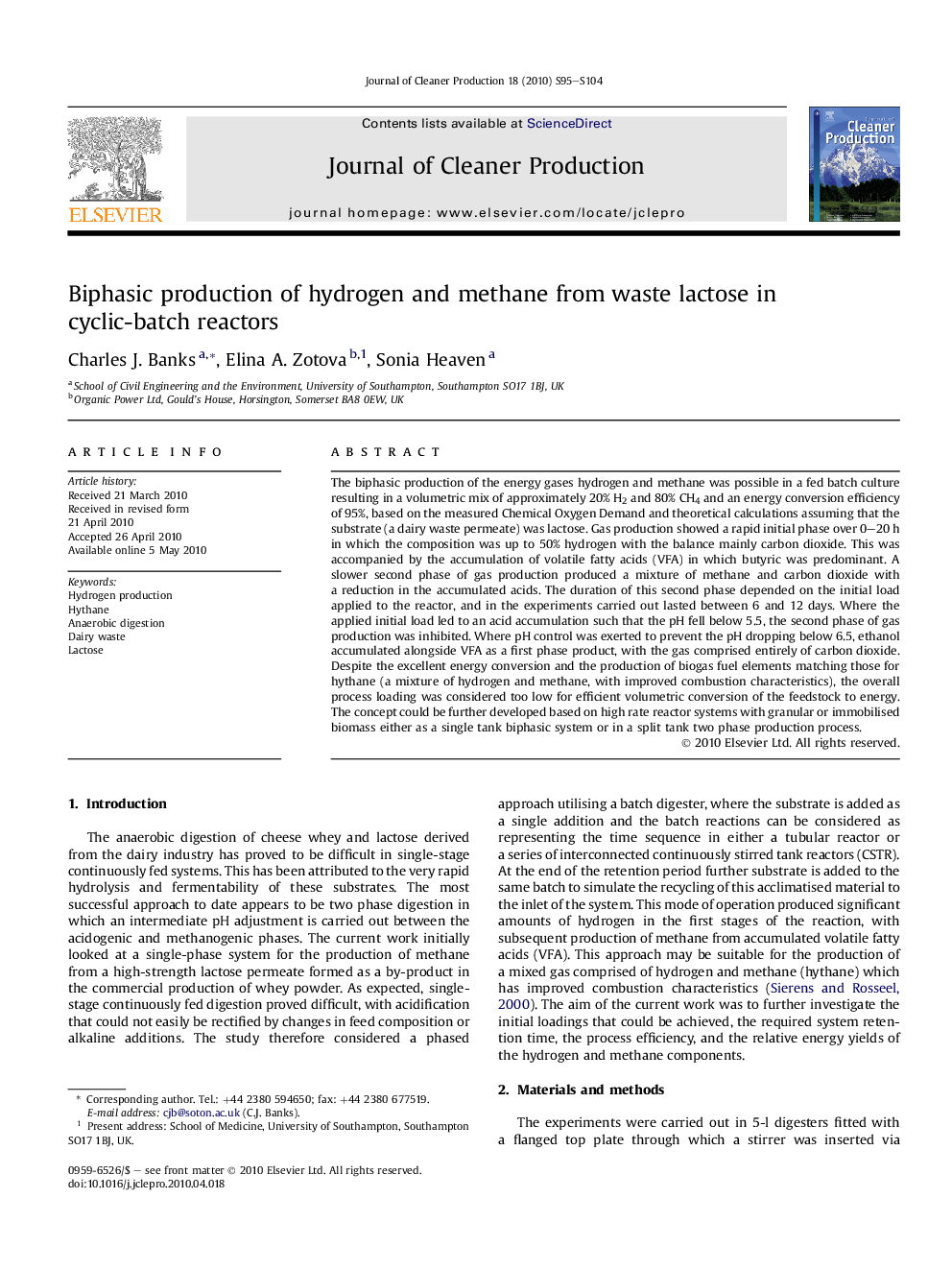| Article ID | Journal | Published Year | Pages | File Type |
|---|---|---|---|---|
| 1746645 | Journal of Cleaner Production | 2010 | 10 Pages |
The biphasic production of the energy gases hydrogen and methane was possible in a fed batch culture resulting in a volumetric mix of approximately 20% H2 and 80% CH4 and an energy conversion efficiency of 95%, based on the measured Chemical Oxygen Demand and theoretical calculations assuming that the substrate (a dairy waste permeate) was lactose. Gas production showed a rapid initial phase over 0–20 h in which the composition was up to 50% hydrogen with the balance mainly carbon dioxide. This was accompanied by the accumulation of volatile fatty acids (VFA) in which butyric was predominant. A slower second phase of gas production produced a mixture of methane and carbon dioxide with a reduction in the accumulated acids. The duration of this second phase depended on the initial load applied to the reactor, and in the experiments carried out lasted between 6 and 12 days. Where the applied initial load led to an acid accumulation such that the pH fell below 5.5, the second phase of gas production was inhibited. Where pH control was exerted to prevent the pH dropping below 6.5, ethanol accumulated alongside VFA as a first phase product, with the gas comprised entirely of carbon dioxide. Despite the excellent energy conversion and the production of biogas fuel elements matching those for hythane (a mixture of hydrogen and methane, with improved combustion characteristics), the overall process loading was considered too low for efficient volumetric conversion of the feedstock to energy. The concept could be further developed based on high rate reactor systems with granular or immobilised biomass either as a single tank biphasic system or in a split tank two phase production process.
